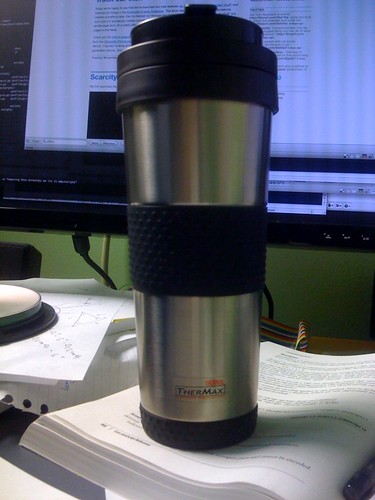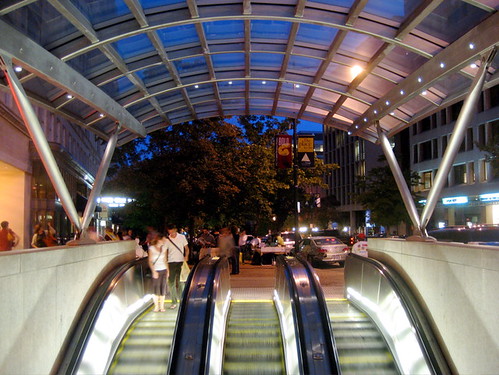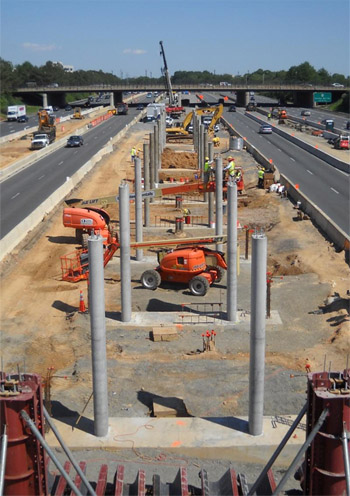The Washington Post ran a long investigative article about Pepco, the local utility that serves Washington DC and the nearby Maryland suburbs. It took Pepco to task for its lousy reliability and exposed its weak excuses (and outright lies) about its reliability problems. Pepco ranks among the worst utilities in the country for number and length of outages. Read the article
here. Also check out the associated links for more information.
The problem with utility reliability is that the costs of outages are primarily borne by the customers--they are externalized from the utility. The only costs utilities pay are a tiny loss of revenue and the chewing out they get in the press. The difference between a 1-hour outage and a 5-hour outage may cost Pepco a dollar or less in lost revenue, but it might cost a residential customer a refrigerator full of food. I recall after Tropical Storm Isabel came through in 2003, I walked past my nearby Baskin-Robbins about 24 hours after the power went out. They had to throw out their entire inventory of ice cream: thousand of dollars worth. They were just one of thousands of businesses that suffered major financial losses due to the power outages from that storm.
The article mentioned that some customers are spending $9,400 to install natural gas-powered generators in their homes. If 10,000 customers do that, it's a total expense of $94,000,000 incurred by them to reduce the risks associated with outages. Unlike, say, cell phone service, customers cannot choose to switch to a different utility for their electric distribution service, so there is no competition to raise the bar for reliability.
Pepco is regulated by the public utility commissions in DC and Maryland. The simplest way to get Pepco to make improvements is for these commissions to internalize the costs of outages with a simple mechanism.
Pepco has announced that they have a 5-year plan to improve reliability. So give them the five years they claim they need. Then starting in 2015 the PUCs should require them to reimburse customers for outages. For example, any residential customer would receive $2 per hour or portion of an hour that their power is out after the first 15 minutes. So if Pepco experiences an equipment failure that knocks out 2000 customers for 3 hours, they pay $12,000--$6 to each customer. If after a big storm, they lose 100,000 customers for 10 hours, that's $2 million--$20 to each customer. Reimbursements to commercial customers would be on a different scale. (I'm just making up the amount of these reimbursements for illustrative purposes; the appropriate dollar amounts could be higher or lower.)
The utility commissions would build into Pepco's rate case the expected costs to the utility for achieving "average" reliabilty based on regional or national statistics. Or to return to their own reliability rate from 2004. If Pepco exceeds that, then their investors would reap extra profit; if they fall short, their investors pay. This is fair, since the customers who are directly affected are the ones who get the reimbursements if Pepco falls short, while the customer base as a whole would pay a slight premium for increased reliability if they exceed the goals.
The commission could set the bar anywhere they like. One idea would be to expect them to achieve "average" by 2015 and then increase the reliability expectation by some percentage each year, incentivizing Pepco to continuously improve.
What about "Acts of God?" I would propose that there are no "Acts of God." It's up to the utility to prepare for big storms and other large-scale disruptions. This is, in fact, the business they are in. Hopefully the risk of enormous payments would get them to start looking more seriously at undergrounding, redundancy, smart grid and other risk abatement strategies. They could purchase re-insurance for major losses. That would be good, because the re-insurer would likely be tougher on Pepco than the PUCs, since they would be scrutinizing Pepco's actions to make sure they reduce their own risks.
This customer rebate mechanism is very simple and easy to understand. The financial incentives are exactly aligned with the desired outcomes. The utility is rewarded for exceeding its goals and penalized for falling short. It incentivizes them to go beyond the minimum and look for creative solutions.
For the last five years, Pepco has gotten fat and happy while allowing its reliability to go to pot. Sure, they've had a couple of uncomfortable press conferences, but no real penalties. A mechanism like this would keep them from ever letting it happen again.










































